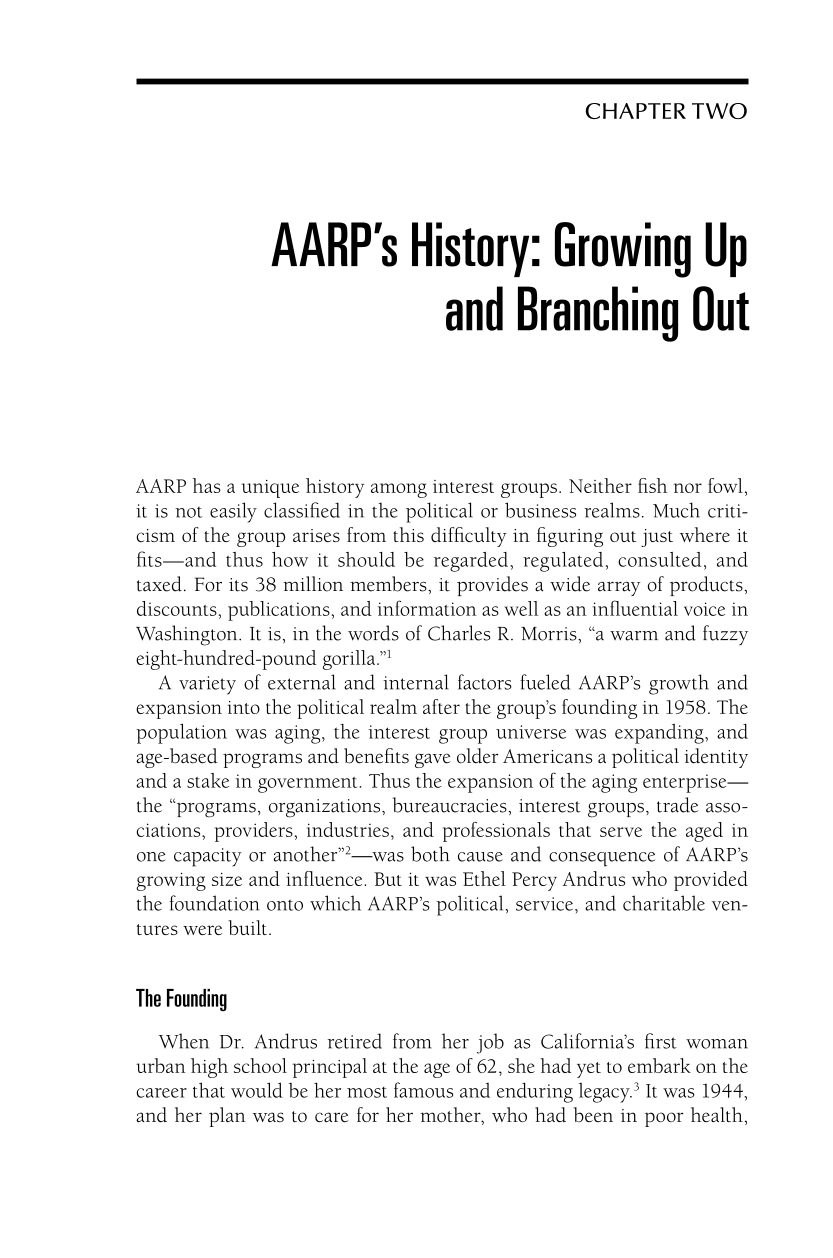CHAPTER TWO
AARP’s History: Growing Up
and Branching Out
AARP has a unique history among interest groups. Neither fi sh nor fowl,
it is not easily classifi ed in the political or business realms. Much criti-
cism of the group arises from this diffi culty in fi guring out just where it
fi ts—and thus how it should be regarded, regulated, consulted, and
taxed. For its 38 million members, it provides a wide array of products,
discounts, publications, and information as well as an infl uential voice in
Washington. It is, in the words of Charles R. Morris, “a warm and fuzzy
eight-hundred-pound gorilla.”
1
A variety of external and internal factors fueled AARP’s growth and
expansion into the political realm after the group’s founding in 1958. The
population was aging, the interest group universe was expanding, and
age-based programs and benefi ts gave older Americans a political identity
and a stake in government. Thus the expansion of the aging enterprise—
the “programs, organizations, bureaucracies, interest groups, trade asso-
ciations, providers, industries, and professionals that serve the aged in
one capacity or another”
2
—was both cause and consequence of AARP’s
growing size and infl uence. But it was Ethel Percy Andrus who provided
the foundation onto which AARP’s political, service, and charitable ven-
tures were built.
The Founding
When Dr. Andrus retired from her job as California’s fi rst woman
urban high school principal at the age of 62, she had yet to embark on the
career that would be her most famous and enduring legacy.
3
It was 1944,
and her plan was to care for her mother, who had been in poor health,














































































































































































































































































